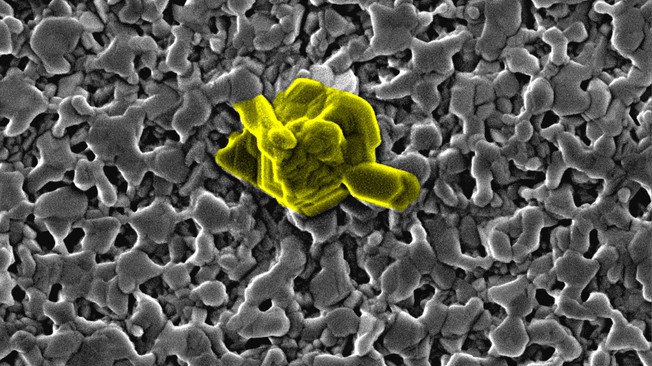EPFL achieves record stability for perovskite solar cells

Devices lost less than 5 percent performance in accelerated ageing tests
EPFL scientists have greatly improved the operational stability of perovskite solar cells by introducing cuprous thiocyanate protected by a thin layer of reduced graphene oxide.
Devices lost less than 5 percent performance when subjected to a crucial accelerated ageing test during which they were exposed for more than 1000 hours to full sunlight at 60degC.
Perovskite solar cells (PSCs) can offer high light-conversion efficiency with low manufacturing costs. But to be commercially viable, perovskite films must also be durable and not degrade under solar light over time. EPFL scientists have now greatly improved the operational stability of PSCs, retaining more than 95 percent of their initial efficiencies of over 20 percent under full sunlight illumination at 60degC for more than 1000 hours. The breakthrough, which marks the highest stability for perovskite solar cells, is published in Science.
Challenges of stability
Given the vast chemical versatility, and the low-cost processability of perovskite materials, the PSCs hold the promise to lead the future of photovoltaic technology by offering cheap, light weight and highly efficient solar cells.
But until now, only highly expensive, prototype organic hole-transporting materials (HTMs,selectively transporting positive charges in a solar cell) have been able to achieve power-conversion efficiencies over 20 percent. And by virtue of their ingredients, these hole-transporting materials adversely affect the long-term operational stability of the PSC.
Therefore, investigating cheap and stable hole transporters that produce equally high efficiencies is in great demand to enable large-scale deployment of perovskite solar cells.
Among various inorganic HTMs, cuprous thiocyanate (CuSCN) stands out as a stable, efficient and cheap candidate ($0.5/gr versus $500 /gr for the commonly used spiro-OMeTAD). But previous attempts to use CuSCN as a hole transporter in perovskite solar cells have yielded only moderately stabilised efficiencies and poor device stability, due to problems associated with depositing a high-quality CuSCN layer atop of the perovskite film, as wells as the chemical instability of the CuSCN layer when integrated into a perovskite solar cell.
A stable solution
Now, researchers at Michael Grätzel's lab at EPFL, in a project led by postdocs Neha Arora and M. Ibrahim Dar, have introduced two new concepts that overcome the major shortcomings of CuSCN-based perovskite solar cells. First, they developed a simple dynamic solution-based method for depositing highly conformal, 60-nm thick CuSCN layers that allows the fabrication of perovskite solar cells with stabilised power-conversion efficiencies exceeding 20 percent. This is comparable to the efficiencies of the best performing, state-of-the-art spiro-OMeTAD-based perovskite solar cells.
Second, the scientists introduced a thin spacer layer of reduced graphene oxide between the CuSCN and a gold layer. This innovation allowed the perovskite solar cells to achieve excellent operational stability, retaining over 95 percent of their initial efficiency while operating at a maximum power point for 1000 hours under full-sun illumination at 60 °C. This surpasses even the stability of organic HTM-based perovskite solar cells that are heavily researched and have recently dominated the field.
The researchers also discovered that the instability of the perovskite devices originates from the degradation of CuSCN/gold contact during the solar cell's operation.
"This is a major breakthrough in perovskite solar-cell research and will pave the way for large-scale commercial deployment of this very promising new photovoltaic technology," says Michael Grätzel.
"It will benefit the numerous scientists in the field that have been intensively searching for a material that could replace the currently used, prohibitively expensive organic hole-transporters," adds M. Ibrahim Dar.
'Perovskite solar cells with CuSCN hole extraction layers yield stabilised efficiencies >20 percent' by Neha Arora et al; Science 28 September 2017


































